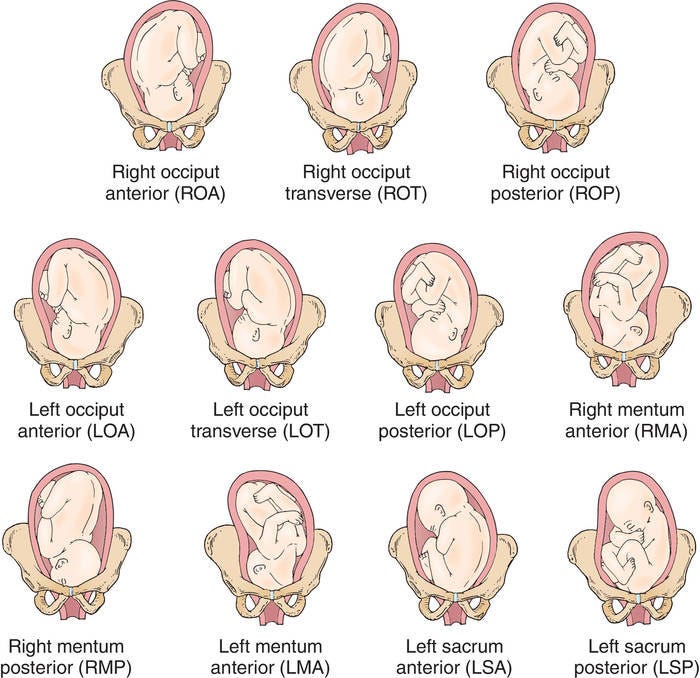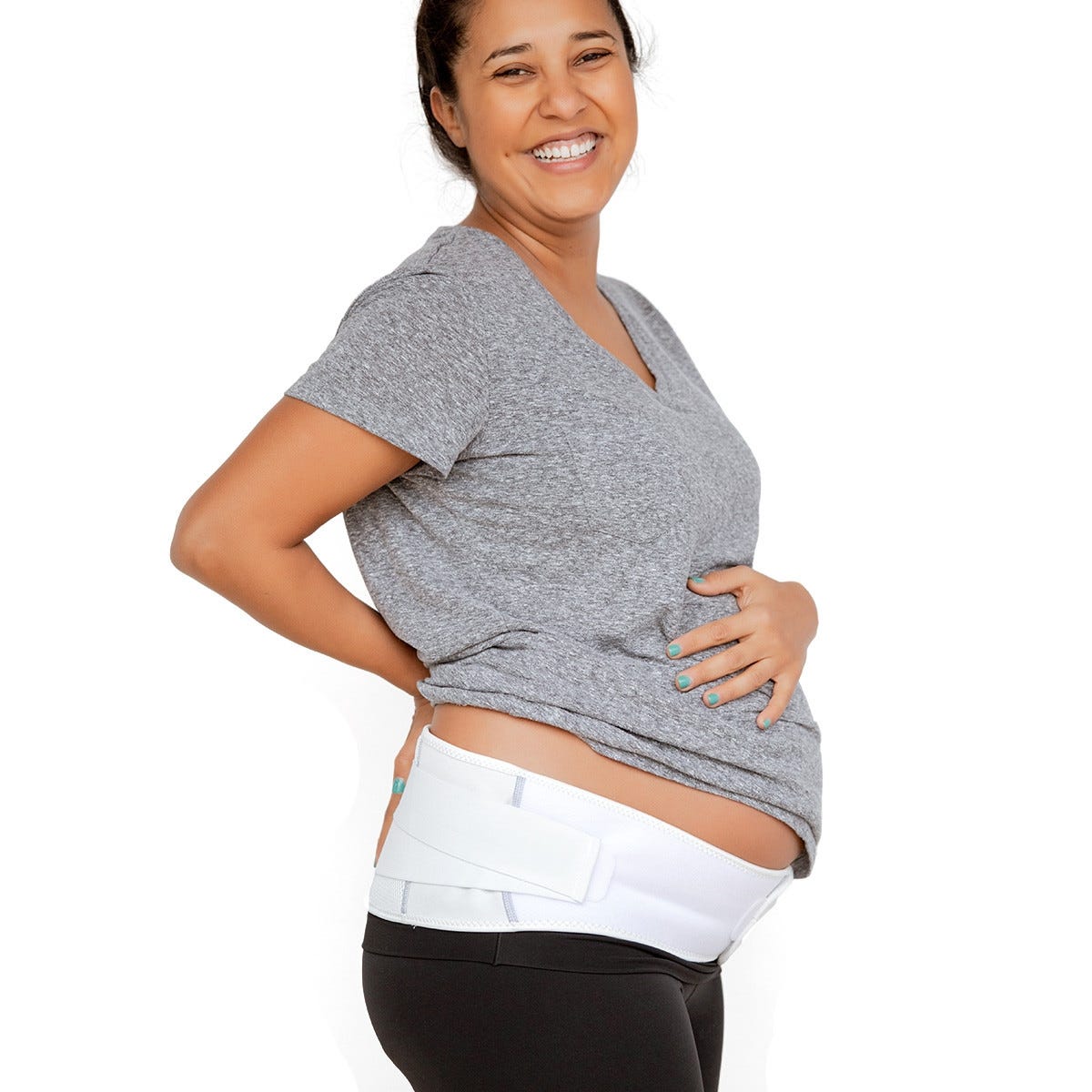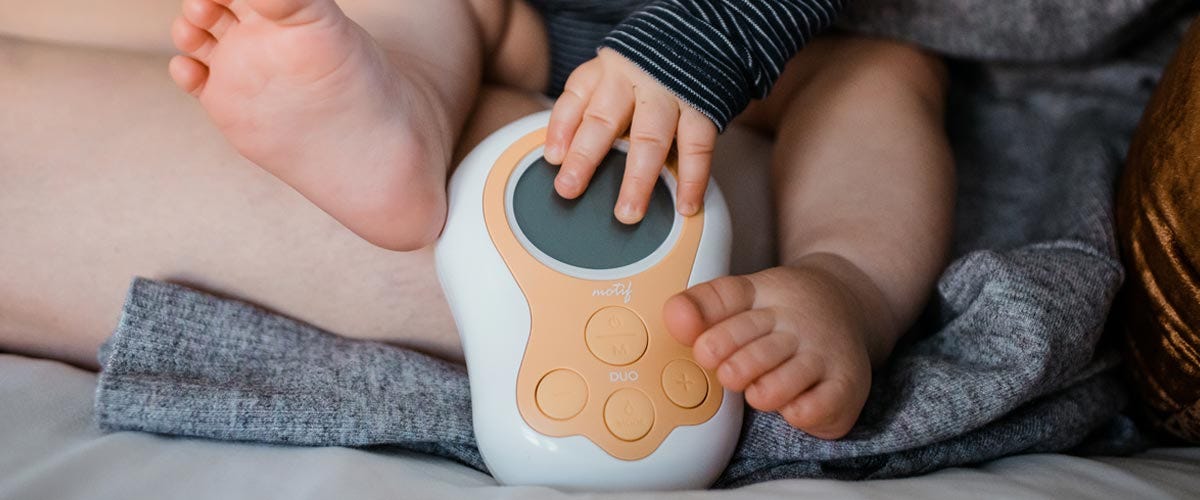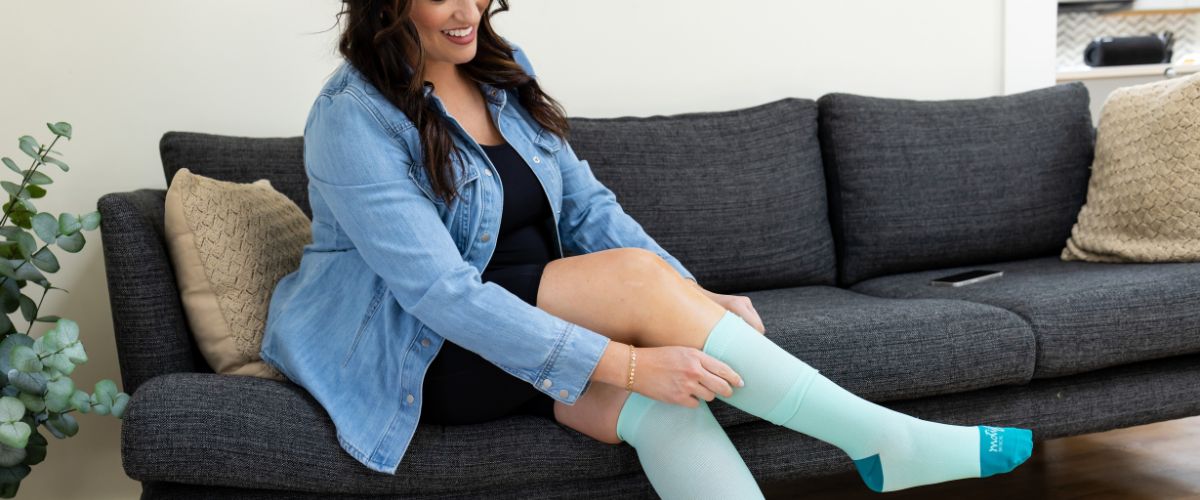After all the years I've done this work, labor is still unpredictable and no one knows when or how it will happen, if it will go smoothly or have complications. But what I do know is that there are ways for you to prepare and “stack the deck” in your favor for an uncomplicated vaginal delivery. One of those is to help baby be in an optimal birth position before labor starts. How do you know? And how do you do that? Great questions! Let's talk about it...
Birth Positions 101
There are many different positions your baby can be in as you reach full term in the third trimester. Babies that are heads up and bottoms down are in what is known as breech position. Breech babies often move into a head-down position between 32 and 36 weeks of pregnancy. Your healthcare provider is hopefully checking at every visit and you may hear him or her use abbreviations like, “LOT” or “ROA” to describe how your baby is lying in your belly. The image below is a visual of how your baby is positioned for these various terms.


What Is The Optimal Position?
Head-down position is the best position for vaginal birth. Ideally, when labor starts your baby will be in the left occiput transverse position (LOT) or left occiput anterior position (LOA), meaning their head is down in your pelvis and baby's back is on the left to left-forward side of your belly. Some babies will be born with their back on the right side of the mother's belly, as this can also put the baby's head in a good position to navigate through the pelvis and birth canal, but most babies will rotate themselves around to the left-lying position either before or during the birth process.
What Position Is My Baby In?
This is usually less complicated than it may seem! Before you start, you'll want to spend a couple of days paying attention to where in your belly you are feeling both big and little baby movements. Then, find a comfortable place to lie down and imagine you have a large plus sign drawn on your belly, centered on your belly button, which essentially divides your abdomen into 4 quadrants.
Babies can be born in most any position, so try not to worry if your baby is stubbornly staying in a position that is not considered “optimal.” Your body and your baby know what they are doing and with a tincture of time, these things usually work themselves out.
Start in one of the upper quadrants and feel around. Do you feel a firm bulge there? Is this a place where you are usually feeling strong kicks? If you feel a bulge, it is likely your baby's bottom. If this is a place where you generally feel strong kicks, this is probably where your baby's legs and feet are and sometimes you can even feel baby's knees or feet moving around and away from your hands! Feel around on the other upper quadrant, you should feel whichever you did not feel on the other side.
Next feel the lower quadrants. One side will probably have little arms and hands (should be the same side as the feet) and the other side will have a shoulder and/or head. The head feels like a softball in your tummy, it is super firm and will bounce away from your fingers. Sometimes it helps to use a baby doll to visualize what you are feeling, especially if it’s your first time trying this!
Compare what you are feeling to the chart above to decide which position you think your baby is in—voila! Now you know how your baby is lying in your belly!
What if My Baby Isn't in an Optimal Position?
First, I want to remind you that your baby has the space to move. Your baby might change position in an hour or a day, so relax in knowing that this may not even be an issue. Second, there are some really simple habits you can start that will encourage your baby to get in a more optimal position and they all have to do with your posture. Both of the things I'm going to mention have to do with your pelvis, particularly the position of bony structure in relation to your spine, so I want you to take a minute and think about that part of your body and how it moves.
There is a way for your pelvic bones to be neutral, tucked, or untucked. If you aren’t sure what that means, get on your hands and knees and concentrate on moving just your pelvic bones—not your ribs or your shoulders. If you contract your lower back muscles and stick your bum up in the air, this is “untucking” your pelvis. If you contract your glutes and round your low back, this is a “tucked” pelvis (like a dog tucking their tail). In between these two positions is “neutral.” Spend a couple of minutes moving your pelvic bones through the tucked and untucked positions. This can be a great stretch for your low back and will also stretch and contract your pelvic floor muscles. Prenatal yoga can also help.
Daily Habits That Can Help
Many of us spend a large portion of the day sitting and the position of your pelvis while you are sitting has an impact on the position baby moves into. Sit with good posture, a straight back and an untucked pelvis (up on your “sit bones”). This creates space in the forward part of your pelvis, which encourages your baby to settle into a head down), LOT/LOA position. If you sit with your back slouched and your pelvis tucked, or reclined back on the couch, the space is created in the back of your pelvis and makes it more comfortable for baby to be in one of the OP, or occiput posterior positions.
OP positions can lead to dreaded “back labor,” so we definitely want try to avoid that! How we sit is very much a habit, though, and it is one that can be hard to break. Switching from a typical chair to a birth ball chair will help you maintain good posture, because they keep you up on your sit bones. Using a pregnancy support garment can also help by giving gentle compression to your back to keep you sitting up straight.
The second habit that can affect fetal position is how you bend over. This is easiest to figure out by thinking about your back. When something is on the floor, the majority of people will pick it up by arching their back to bend over and reach the ground. While you are pregnant, it is far better to squat, keeping your back straight, as this allows baby to comfortably stay in the forward positions in your belly.
Again, it will take effort to change this habit, but this small movement, done several times a day will help your core stay strong and allow your baby to be in an ideal position for labor. Doing 5 practice squats 2 to 3 times a day can help create this habit, as can wearing a pregnancy support belt.
Babies can be born in most any position, so try not to worry if your baby is stubbornly staying in a position that is not considered “optimal.” Your body and your baby know what they are doing and with a tincture of time, these things usually work themselves out.
For more information and daily exercises aimed at repositioning baby, visit www.spinningbabies.com.










